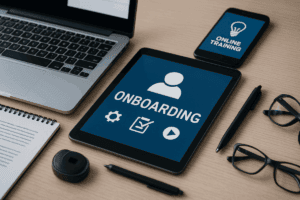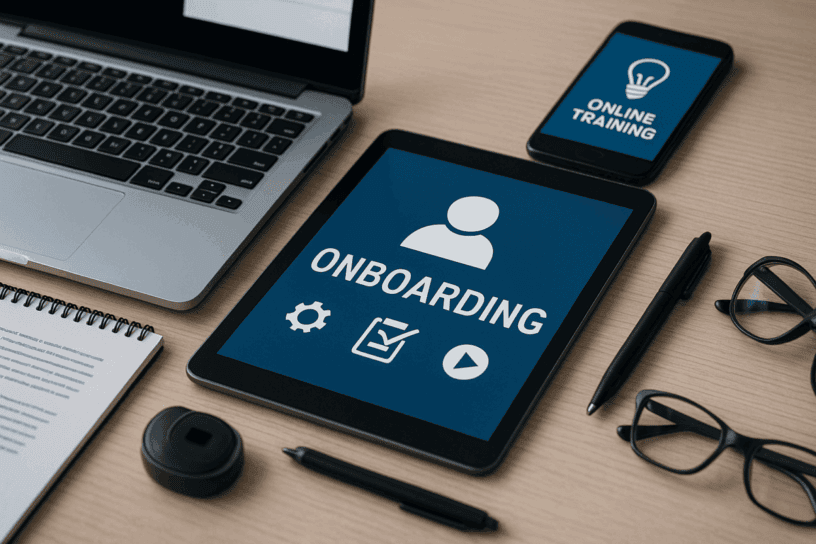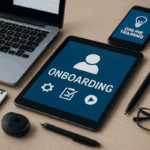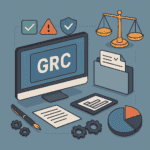
Seamless onboarding is the key to success for a new employee. It is an introduction to company culture and corporate workplace. Onboarding, by its very nature, is a drags with useless paperwork, in-office training, and delaying the roll-out of required tools. But technology-based solutions, in a genius age, are changing the way new employees are being onboarded and making it slick, interactive, and methodical.
Digital Documentation and Paperless Processes
One of the largest onboarding shifts is going paperless. Companies are using cloud technology to streamline forms, bypassing the time spent doing it the old-fashioned way, and forcing through documents. Electronic signing allows individuals to sign documents, contracts, and tax returns without the need for printing or faxing. The innovations cut up administrative hurdles into pieces and maintain it in line with company workflows and compliance.
Automated Workflows for Efficiency
Automation has been a driving force behind the simplification of onboarding. Automated workflows enable HR departments to map tasks, monitor progress, and notify the proper stakeholders when action is necessary. An automation approach based on process ensures critical steps are not missed and keeps employees prepared day one. From IT provisioning to benefits enrollment, automation provides a relief from the workload for HR departments while offering workers an enhanced experience.
Online Resume Builder for Career Growth
Career growth, along with onboarding, is a problem organizations are facing these days. Organizational careers help organizations motivate employees to update their electronic portfolio using an online resume creator. Such tools help employees record their capacity, achievement, and professional development in a better way. Introducing career planning as an onboarding process builds ongoing improvement cultures and future proves employees in businesses.
AI Chatbots and Virtual Assistants
Virtual assistants and AI-powered chatbots are making onboarding a reality in the sense of engagement and fun. Virtual assistants are able to respond immediately to frequent questions and new hires need to google policy-based knowledge, organization, and even passwords. Employees are no longer required to wait for the HR staff to become available as they can easily access what they need and therefore provide a feasible and autonomous onboarding process.
Personalized Training and Learning Platforms
Every new employee has his/her own learning curve. AI finds application for learning platforms to personalize learning modules based on an employee’s job, experience, and learning patterns. Interactive training modules, video lessons, and quizzes assist employees in gaining necessary skills in an efficient manner. Quizzes and badges, elements of gamification, allow new employees to remain motivated and engage with training content.
Virtual and Augmented Reality for Immersive Experiences
Virtual and augmented reality are some of the solutions being adopted by some companies for onboarding. Virtual and augmented reality provide immersive experiences in which employees stroll through office spaces, interact with virtual workplaces, or practice safety procedures. In manufacturing, healthcare, and logistics, VR and AR training allow employees to learn firsthand in a safe space prior to actual work.
Collaboration Tools for Seamless Integration
Great onboarding is not training and paperwork, but also red-carpet treatment to welcome the new hires into company culture. Collaboration software such as Slack, Microsoft Teams, and Trello bring remote and on-site employees together. They offer real-time messaging, project collaboration, and virtual meet-and-greets, engaging the new hires on day one.
HR Analytics for Continuous Improvement
Data-driven decision-making is revolutionizing how companies optimize onboarding. Employee training, engagement, and retention are monitored using HR analytics tools. This analysis detects inefficiencies, allows for improvement in the content used in onboarding, and allows for its customization for the new hires. They can also predict future problems and improve the onboarding process using predictive analytics.
While work-from-home and hybrid work culture became the new faces, technology solutions stepped in to enable remote onboarding of employees. Cloud HR suites, video conferencing, and virtual orientation programs ensure remote employees get an equally effective onboarding experience as their office counterparts. Welcomed by digital pathways, interactive training, and virtual team-building activities give a sense of belonging irrespective of physical distances.
Conclusion
This transition to technology-based onboarding is not a trend but a requirement for companies that seek to recruit and retain high achievers. Technology, automation, AI, e-learning, and collaboration tools make it possible for companies to have a successful and engaging onboarding process. Technology is changing leaps and bounds, and companies need to keep up with it so that transitions are made easy for employees and that a culture of innovation and development is encouraged.










